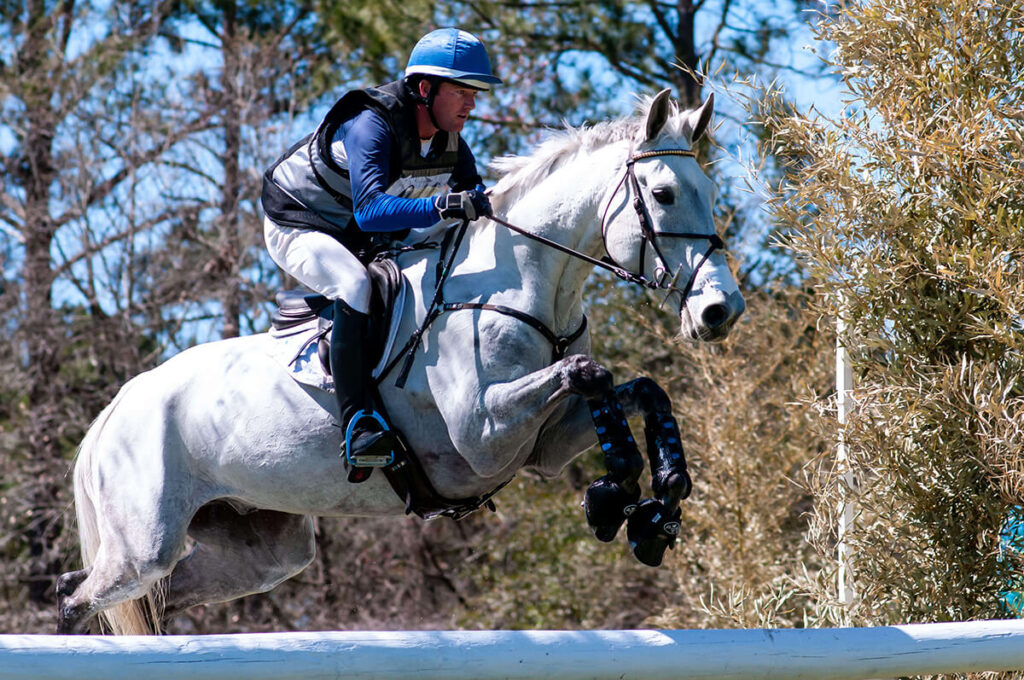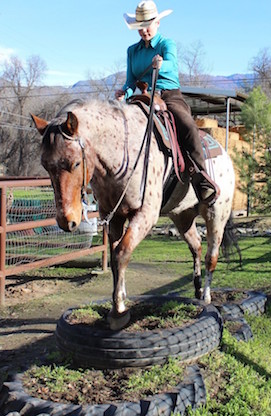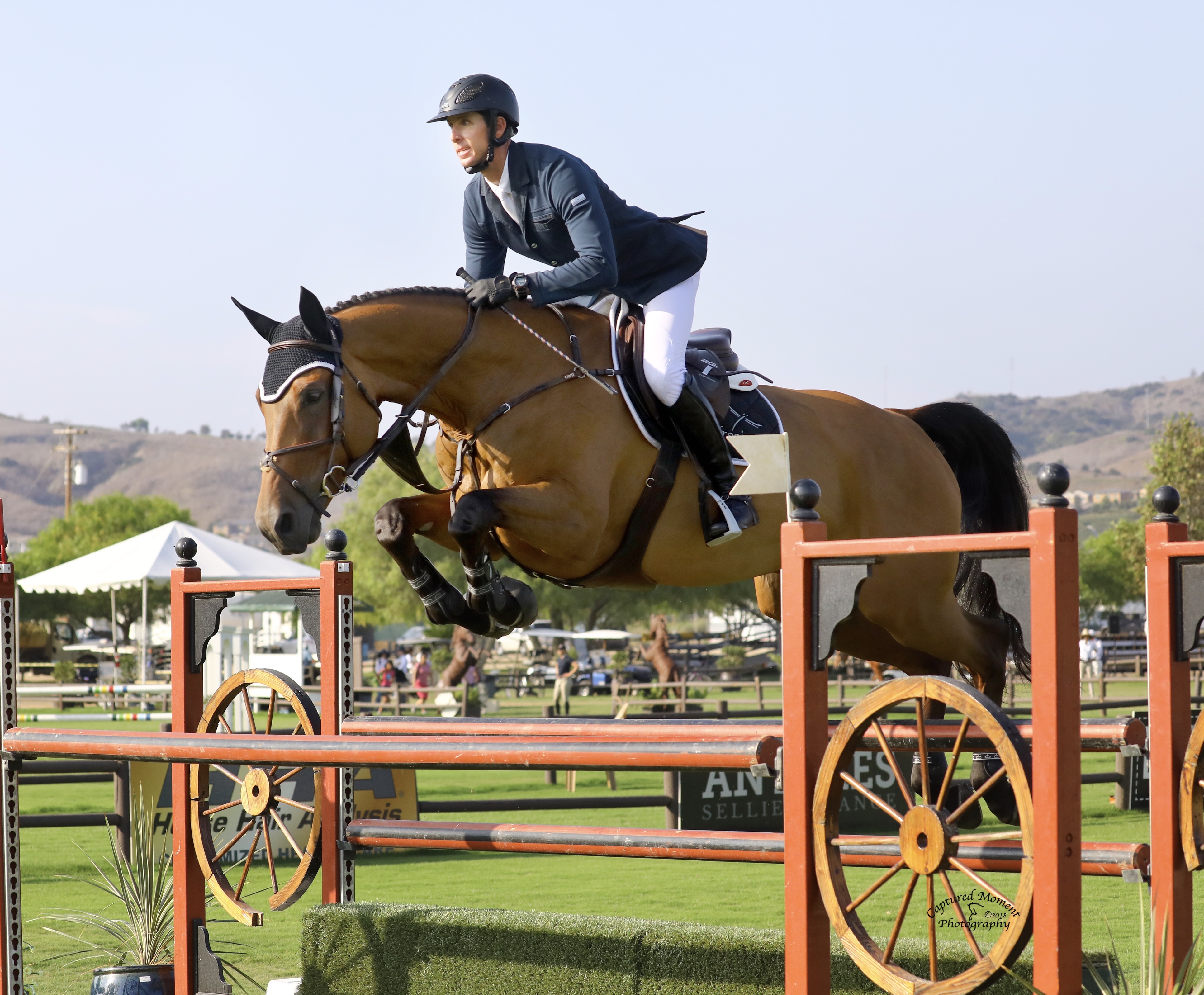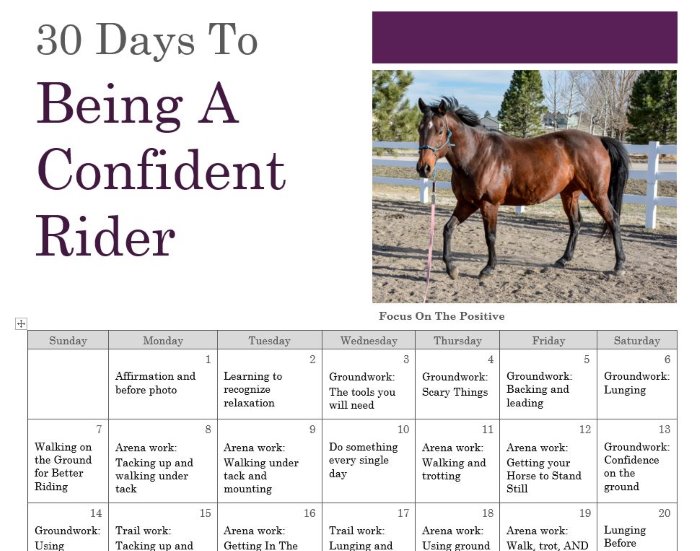In this article, you will learn about overcoming challenges in horseback riding. Horseback riding can be a thrilling and enjoyable activity, but it also comes with its fair share of challenges. Whether you’re a beginner or an experienced rider, you may encounter obstacles along the way. This article will provide you with tips and strategies to help you overcome these challenges and become a more confident and skilled rider.
One of the challenges that riders often face is fear. Riding a horse is a dynamic and unpredictable activity, and it’s natural to feel a bit apprehensive at times. However, by understanding and addressing your fears, you can build trust and confidence in yourself and your horse. Another challenge is developing good balance and coordination, as riding requires a strong core and good body control. By practicing specific exercises and techniques, you can improve your balance and become a more effective rider.

Overcoming Challenges in Horseback Riding
Horseback riding is an exhilarating and fulfilling activity that brings joy and a sense of freedom to riders of all ages and experience levels. However, like any sport or hobby, horseback riding is not without its challenges. Whether you are a beginner or an experienced rider, there are various obstacles that you may encounter along your equestrian journey. In this article, we will explore some common challenges faced by riders and discuss strategies to overcome them.
Fear of Falling
One of the most common challenges riders face is the fear of falling off the horse. The possibility of getting injured can be overwhelming and cause anxiety, especially for beginners. However, it is important to remember that falling off a horse is a normal part of the learning process, and most riders experience it at some point.
To overcome the fear of falling, it is crucial to build trust and confidence in your riding abilities. Start by practicing in a safe and controlled environment under the guidance of a qualified instructor. Gradually increase the difficulty level as you gain more experience and become more comfortable in the saddle. Remember to always wear a riding helmet for added protection and peace of mind.
Poor Balance and Coordination
Maintaining balance and coordination while riding can be a challenge, especially for beginners. Proper balance is essential to maintain control over the horse and execute riding maneuvers effectively. Without good balance, a rider may feel wobbly or unstable in the saddle, making it difficult to communicate with the horse.
Improving balance and coordination can be achieved through regular practice and exercises specifically designed for riders. Engaging in activities such as yoga or pilates can help strengthen your core muscles, which are crucial for maintaining balance. Additionally, practicing riding without stirrups can improve your overall stability and body awareness.
Communication with the Horse
Effective communication between rider and horse is essential for a successful and enjoyable riding experience. However, establishing clear communication is often a challenge, especially for riders who are new to the sport. Horses communicate primarily through body language, and it is important for riders to understand and respond appropriately to these cues.
To improve communication with your horse, dedicate time to learning and understanding equine behavior. Observe your horse’s movements, gestures, and expressions to gain insight into their current state of mind. Working with an experienced trainer or participating in natural horsemanship programs can also help enhance your ability to communicate with horses effectively.
Overcoming Riding Plateaus
It is common for riders to experience periods of stagnation or plateau in their progress. Whether it is mastering a particular skill or overcoming a specific challenge, plateaus can be discouraging and demotivating. However, it is important to view plateaus as opportunities for growth and learning.
To overcome riding plateaus, set specific goals and create a plan to achieve them. Break down your goals into smaller, achievable steps and track your progress along the way. Seeking guidance from a qualified instructor or participating in clinics and workshops can also provide fresh perspectives and insights to help you overcome obstacles and continue to grow as a rider.
Building a Connection with Your Horse
Establishing a deep connection and bond with your horse is a vital aspect of horseback riding. It not only enhances the riding experience but also improves your overall communication and partnership with the horse. Building a connection takes time, patience, and a genuine understanding of the horse’s nature and behavior.
Understanding Horse Behavior
To strengthen the bond with your horse, it is essential to understand their natural behavior and instincts. Horses are prey animals by nature and have specific ways of communication and interaction. Learning to read your horse’s body language and understanding what their behaviors signify will help you connect with them on a deeper level.
Establishing Trust and Respect
Trust and respect are fundamental in any relationship, including the one between a rider and a horse. Building trust involves consistency, patience, and positive reinforcement. Spend time bonding with your horse through grooming, groundwork exercises, and regular interaction. By rewarding good behavior and providing clear boundaries, you establish a foundation of trust and respect.
Developing Clear Communication
Clear communication is key to a harmonious partnership with your horse. Develop an effective communication system using cues, aids, and voice commands that your horse can easily understand. Focus on being consistent, clear, and responsive in your cues and avoid confusion by using too many conflicting messages.
Bonding through Groundwork
Groundwork exercises are an excellent way to enhance your bond with your horse. They involve working with your horse on the ground, using various exercises to build trust, respect, and communication. Groundwork exercises can include leading, lunging, desensitization, and liberty work. They not only deepen your connection with the horse but also help establish yourself as a trustworthy and respected leader.
Preventing and Managing Riding Injuries
While horseback riding can be a pleasurable experience, precautions must be taken to prevent and manage riding-related injuries. Here are some essential tips:
Proper Warm-up and Stretching
Before riding, it is crucial to warm up your muscles and prepare your body for the physical demands of riding. Engage in light exercises and stretching routines to loosen tight muscles and improve flexibility. A warm-up routine can help prevent muscle strains, reduce the risk of injury, and enhance your overall performance.
Correct Riding Posture
Maintaining a correct riding posture is not only aesthetically pleasing but also crucial for your safety and the well-being of your horse. A balanced and aligned posture ensures a stable and secure seat in the saddle, minimizing the risk of falls or injuries. Work with a knowledgeable instructor to ensure that your riding position is correct and aligned.
Riding within Skill and Comfort Level
It is important to ride within your skill and comfort level to mitigate the risk of accidents or injuries. Pushing yourself beyond your limits or attempting advanced maneuvers before you are ready can increase the chances of accidents. Gradually progress at a pace suitable for your abilities and always prioritize your safety.
Regularly Checking Horse’s Health
Ensuring the well-being of your horse is key to preventing riding-related injuries. Regular veterinary check-ups, proper nutrition, and appropriate hoof care are necessary for the horse’s overall health and soundness. A healthy horse will be better equipped to perform well and minimize the risk of accidents or injuries.
Experiencing Different Riding Terrains
One of the fascinating aspects of horseback riding is the opportunity to explore various terrains and environments. Different terrains offer unique challenges and experiences, allowing riders to broaden their horizons and enhance their riding abilities.
Riding in Open Fields
Riding in open fields provides riders with the freedom to experience the thrill of galloping across wide expanses. It requires good control over the horse and the ability to navigate uneven terrain. Riding in open fields allows riders to connect with nature and enjoy the exhilarating feeling of speed and freedom.
Navigating Forest Trails
Traversing through forest trails offers riders a chance to explore nature at a more serene and relaxed pace. It requires focus, agility, and problem-solving skills as riders navigate through narrow paths and encounter various obstacles such as fallen branches or uneven terrain. Riding in forests fosters a deeper connection with the environment and enhances the rider’s adaptability and horsemanship skills.
Beach and Water Riding
Riding along the beach or through shallow waters is a unique and enchanting experience. The combination of sand, saltwater, and the sound of crashing waves creates a serene and tranquil atmosphere. Beach and water riding can help desensitize horses to unusual environments and provide a refreshing change of scenery for both horse and rider.
Mountainous Terrain
Mountainous terrain presents riders with challenging and demanding conditions. It requires advanced riding skills, as riders navigate steep inclines, rocky paths, and unpredictable weather conditions. Riding in mountainous terrain enhances a rider’s strength, agility, and problem-solving abilities. It also offers breathtaking views and a sense of accomplishment when conquering difficult trails.

Competitive Horseback Riding
For riders seeking a more competitive aspect to horseback riding, there are various equestrian disciplines to explore. Competitions provide an opportunity to showcase riding skills, challenge personal limits, and connect with like-minded individuals.
Dressage Competitions
Dressage is an elegant and precise equestrian discipline that emphasizes the harmony between horse and rider. In dressage competitions, riders perform a series of predetermined movements and exercises to showcase their horse’s obedience, flexibility, and athleticism. Success in dressage requires excellent communication, balance, and subtle aids from the rider.
Show Jumping Events
Show jumping tests both the technical and athletic abilities of horse and rider. In this discipline, riders navigate a course of jumps, aiming to clear them without knocking down any obstacles. Show jumping requires good horsemanship, accuracy, and quick decision-making to achieve a clear round within the time allowed.
Endurance Riding Challenges
Endurance riding is a test of stamina and endurance for both horse and rider. Competitors cover long distances, often over rugged terrains, within a specified time frame. Endurance riding emphasizes the fitness, soundness, and care of the horse. Riders must navigate through different landscapes and terrains while ensuring the welfare and well-being of their equine partners.
Rodeo Competitions
Rodeo competitions showcase traditional western riding skills and showcase the athleticism of both horse and rider. Events such as barrel racing, calf roping, and bull riding require precision, speed, and courage. Rodeo competitions are deeply rooted in western culture and attract riders who enjoy the adrenaline rush and the thrill of competition.
Horseback Riding for Therapy and Rehabilitation
Horseback riding has been widely recognized for its therapeutic benefits and its ability to support physical, emotional, and psychological well-being. Various therapeutic programs and interventions have been developed to harness the healing potential of horses.
Equine-Assisted Therapy
Equine-assisted therapy involves therapeutic activities and interventions with horses to address individual developmental, emotional, or cognitive issues. By interacting with horses, individuals can enhance their communication skills, emotional regulation, and self-confidence. Equine-assisted therapy can be beneficial for a wide range of conditions, including autism spectrum disorder, depression, anxiety, and post-traumatic stress disorder.
Hippotherapy
Hippotherapy is a form of physical therapy that utilizes horseback riding movements to address motor, sensory, and coordination issues. Under the guidance of a trained therapist, individuals engage in specific riding exercises that stimulate and challenge their muscle groups. The rhythmic movement of the horse can improve balance, coordination, muscle strength, and overall physical function.
Therapeutic Riding Programs
Therapeutic riding programs are designed to provide individuals with disabilities or special needs an opportunity to engage in horseback riding activities. These programs focus on physical, cognitive, and emotional goals tailored to each participant’s specific needs. Therapeutic riding can improve muscle tone, balance, posture, social skills, and overall quality of life.

Exploring Horse Breeds and Characteristics
Horses come in various breeds, each with its unique characteristics and qualities. Understanding different horse breeds can help riders choose a horse that suits their riding style, ability, and preferences.
Warmbloods
Warmbloods are a popular breed known for their versatility and athletic abilities. They are often used in dressage, show jumping, and eventing disciplines. Warmbloods possess a calm and willing temperament, making them suitable for both amateur and professional riders.
Thoroughbreds
Thoroughbreds are well-known for their speed and agility. They are commonly associated with horse racing but are also capable of excelling in other equestrian disciplines such as show jumping, eventing, and polo. Thoroughbreds are known for their high energy and intelligence, making them suitable for experienced riders.
Quarter Horses
Quarter Horses are a versatile breed that excels in various disciplines, including western riding, reining, and cutting. They are valued for their strength, agility, and calm temperament. Quarter Horses are known for their ability to perform quick bursts of speed, making them popular in barrel racing and rodeo events.
Arabians
Arabians are known for their beauty, endurance, and strong bond with their riders. They are often used in endurance riding, showing their ability to cover long distances at a steady pace. Arabians possess a high level of intelligence, sensitivity, and athleticism, making them suitable for experienced riders who enjoy a strong partnership with their horse.
Maintaining Horse Health and Care
Proper horse health and care are essential to ensure the well-being and longevity of the horse. Regular veterinary check-ups, proper nutrition, and diligent care are necessary to keep your horse healthy and happy.
Regular Veterinary Check-ups
Routine veterinary check-ups are crucial for monitoring the horse’s overall health and detecting any potential issues early on. Vaccinations, dental care, deworming, and regular physical examinations should be part of a comprehensive horse health care routine. Consult with a veterinarian to develop a customized health care plan for your horse.
Proper Nutrition and Feeding
A balanced and nutritious diet is essential for the horse’s well-being and performance. Horses require a diet consisting of high-quality forage, grains, and supplements as needed. Consult with an equine nutritionist or veterinarian to create a feeding program tailored to your horse’s specific needs, taking into account factors such as age, activity level, and overall health.
Dental Care
Regular dental care is important to maintain the horse’s oral health and proper digestion. Horses’ teeth continue to grow throughout their lives, and routine dental examinations and floating (smoothing sharp edges) are necessary to prevent dental issues and discomfort. Schedule regular dental check-ups with an equine dentist or veterinarian.
Hoof Care
Proper hoof care is crucial for the horse’s soundness and overall well-being. Regular hoof trimming or shoeing by a qualified farrier helps maintain proper balance, prevents hoof-related issues, and ensures the horse’s comfort. Additionally, a clean and dry environment, along with regular hoof picking and inspections, can help prevent common hoof ailments.

Conclusion
Horseback riding offers countless benefits, from physical fitness and mental well-being to the joy of connecting with a magnificent animal. However, it is important to acknowledge and overcome the challenges that may arise along the way. By understanding and addressing these challenges, riders can continue to grow, learn, and experience the true beauty and freedom that comes with horseback riding.
Remember, each rider’s journey is unique, and overcoming challenges is a part of the process. Embrace the obstacles as opportunities for growth and celebrate your achievements, big and small. Whether you are a beginner or an experienced rider, the challenges you face will undoubtedly make you a stronger and more skilled equestrian. So saddle up, embrace the journey, and let the joy of horseback riding carry you to new heights.
Frequently Asked Questions
-
How long does it take to learn horseback riding?
- The time it takes to learn horseback riding varies depending on individual abilities, previous experience, and dedication to practicing. Some riders may grasp the basics within a few months, while others may take longer to feel confident and comfortable in the saddle.
-
Can anyone learn to ride a horse?
- Yes, horseback riding is an activity that can be enjoyed by people of all ages and abilities. However, it is essential to choose an appropriate horse and receive proper instruction and guidance to ensure a safe and enjoyable experience.
-
Do I need my own horse to learn horseback riding?
- Owning a horse is not necessary to learn horseback riding. Many riding schools and equestrian centers offer lessons and horse rentals for beginners. Starting with lessons on well-trained school horses can be a great way to begin your riding journey.
-
What equipment do I need for horseback riding?
- Essential riding equipment includes a riding helmet, riding boots, breeches or jodhpurs, riding gloves, and a safety vest. Additionally, it is important to ensure the proper fit of the tack and equipment used, such as the saddle, bridle, and girth.
-
How can I overcome fear when riding horses?
- Overcoming fear when riding horses takes time and patience. It is important to start with a well-trained and calm horse, ride under the guidance of a qualified instructor, and gradually build trust and confidence through practice and exposure to different riding situations.
-
What are some common riding injuries and how can they be prevented?
- Common riding injuries include falls, sprains, strains, and horse-related accidents. To prevent injuries, riders should warm up and stretch before riding, maintain a correct riding posture, ride within their skill level, and consistently check the horse’s health, among other precautions.
-
How can I improve my balance and coordination for horseback riding?
- Improving balance and coordination for horseback riding can be achieved through regular riding practice and exercises such as yoga or pilates, which strengthen core muscles. Riding without stirrups and engaging in activities that promote body awareness can also enhance balance and coordination.
-
What are the benefits of horseback riding for therapy and rehabilitation?
- Horseback riding has been proven to provide numerous therapeutic benefits. Equine-assisted therapy, hippotherapy, and therapeutic riding programs can improve physical strength, coordination, confidence, and overall well-being for individuals with disabilities or special needs.
-
How do I choose the right horse for my riding level and experience?
- Choosing the right horse involves considering factors such as your riding level and experience, the horse’s temperament and personality, and its health and soundness. Consulting with experienced trainers, instructors, or equine professionals can help match you with a suitable horse.
-
What can I do to overcome riding plateaus?
- Plateaus in riding progress are common and can be overcome by setting specific goals, breaking them down into achievable steps, seeking guidance and instruction from qualified professionals, and maintaining a consistent and dedicated practice routine. Embrace challenges as opportunities for growth and continue to push yourself to learn and improve.
